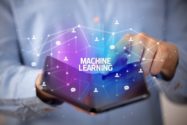SAP Machine Learning
Filter By
Browse By
- SAP Analytics and AI
- SAP Application Development and Integration
- All SAP Application Development and Integration
- SAP ABAP
- SAP ABAP Development Tools
- SAP ABAP Test Cockpit
- SAP API Management
- SAP BAPI
- SAP Basis
- SAP BRF
- SAP Business Application Studio
- SAP CMS
- SAP Design Studio
- SAP Development Tools
- SAP DevOps
- SAP EAI
- SAP EDI
- SAP Extension Suite
- SAP Fiori
- SAP Fiori Elements
- SAP Integration Suite
- SAP Low Code Application Development
- SAP Low Code Automation
- SAP Netweaver
- SAP Release Management
- SAP UI5
- SAP Web Application Server
- SAP Web IDE
- SAP Business Process Management
- SAP Center of Excellence
- SAP CIO
- SAP Customer Experience
- SAP Data and Data Management
- All SAP Data and Data Management
- SAP BW
- SAP BW/4HANA
- SAP Crystal Reports
- SAP Data Archiving
- SAP Data Center
- SAP Data Governance
- SAP Data Integration
- SAP Data Migration
- SAP Data Quality
- SAP Data Services
- SAP Data Strategy
- SAP Data Visualization
- SAP Data Warehouse Cloud
- SAP DMS
- SAP Document Control
- SAP EIM
- SAP ETL
- SAP ETL Tools
- SAP HANA
- SAP HANA Administration
- SAP HANA Deployment Infrastructure
- SAP HANA Studio
- SAP Master Data
- SAP Master Data Governance
- SAP MDM
- SAP Enterprise Architect
- SAP Enterprise Asset Management
- SAP ERP
- SAP Finance
- All SAP Finance
- SAP Accounting
- SAP AR AP
- SAP Asset Accounting
- SAP Billing Systems
- SAP BPC
- SAP BRIM
- SAP Cash Management
- SAP Central Finance
- SAP Controlling
- SAP COPA
- SAP Cost Center Accounting
- SAP Currency Risk
- SAP e-invoicing
- SAP FICO
- SAP Finance Automation
- SAP Advanced Financial Closing
- SAP Financial Consolidation
- SAP Financial Planning
- SAP FX Risk
- SAP General Ledger
- SAP Global Tax Management
- SAP Hyperion
- SAP Order to Cash
- SAP Payment Processing
- SAP Profitability Analysis
- SAP Rebate Management
- SAP S/4HANA Finance
- SAP SWIFT Compliance
- SAP Treasury Management
- SAP Universal Journal
- SAP Governance Risk and Compliance
- SAP Human Capital Management
- SAP Intelligent Technologies
- SAP Platform and Technology
- All SAP Platform and Technology
- SAP Business Technology Platform
- SAP Cloud
- SAP Cloud Connector
- SAP Cloud Integration Platform
- SAP Cloud Migration
- SAP Cloud Platform
- SAP Cloud Providers
- SAP Cloud Strategy
- SAP Digital Signature
- SAP Container Platform
- SAP HANA Enterprise Cloud
- SAP Digital Asset Management
- SAP Smart Forms
- SAP HEC
- SAP Digital Integration Hub
- SAP Hyperscalers
- SAP Infrastructure
- SAP Messaging
- SAP Quality and Testing
- SAP Security
- SAP Spend Management
- SAP Supply Chain Management
- All SAP Supply Chain Management
- SAP APO
- SAP Asset Management
- SAP Business Network
- SAP Digital Manufacturing Cloud
- SAP Digital Twin
- SAP EWM
- SAP IBP
- SAP Inventory Management
- SAP Label Printing
- SAP Logistics
- SAP Manufacturing
- SAP Manufacturing Automation
- SAP MES
- SAP MII
- SAP MM
- SAP MRO
- SAP MRP
- SAP Order Management
- SAP Plant Maintenance
- SAP PLM
- SAP Production Planning
- SAP S&OP
- SAP SD
- SAP SPM
- SAP Supply Chain Planning
- SAP Track and Trace
- SAP Transportation Management
- SAP System Administration
Machine Learning Features in SAP Products
What is Machine Learning?
Machine learning (ML) is a subset of artificial intelligence (AI) algorithms. The differentiating aspect of these algorithms is that they can learn from the input data and modify the model based on changes in that data. It is this “learning” aspect that makes these algorithms powerful.
Machine Learning Applications in SAP Portfolio
SAP applications leverage ML algorithms extensively to embed innovative capabilities within their solutions, help end-users perform advanced analytics with minimal technical proficiency, and allow data scientists and ML engineers to build advanced models and solutions. Below are some examples:
- SAP HANA
SAP HANA has been designed to be easily leveraged as a scalable ML platform. A powerful built-in tool is the predictive analytics library (PAL). A component of the application function library in HANA, PAL includes several algorithms to enable the most frequently used predictive analytics use cases. For advanced users who want to explore advanced algorithms like deep learning, extended machine library (EML) in HANA allows such users to leverage TensorFlow to build deep learning algorithms.
- SAP Data Intelligence
SAP data intelligence has a rich ML content library. This library, which has an ML scenario manager and ML operations cockpit, allows engineers and data scientists to collaborate and build ML models.
- SAP Analytics Cloud Smart Predict
Like most best-of-breed analytics tools, SAP Analytics Cloud provides users the ability to leverage advanced ML algorithms. While ML algorithms have many applications, predictive analytics remains a key one.
Key Considerations for SAPinsiders
Machine Learning Features in SAP Products
What is Machine Learning?
Machine learning (ML) is a subset of artificial intelligence (AI) algorithms. The differentiating aspect of these algorithms is that they can learn from the input data and modify the model based on changes in that data. It is this “learning” aspect that makes these algorithms powerful.
Machine Learning Applications in SAP Portfolio
SAP applications leverage ML algorithms extensively to embed innovative capabilities within their solutions, help end-users perform advanced analytics with minimal technical proficiency, and allow data scientists and ML engineers to build advanced models and solutions. Below are some examples:
- SAP HANA
SAP HANA has been designed to be easily leveraged as a scalable ML platform. A powerful built-in tool is the predictive analytics library (PAL). A component of the application function library in HANA, PAL includes several algorithms to enable the most frequently used predictive analytics use cases. For advanced users who want to explore advanced algorithms like deep learning, extended machine library (EML) in HANA allows such users to leverage TensorFlow to build deep learning algorithms.
- SAP Data Intelligence
SAP data intelligence has a rich ML content library. This library, which has an ML scenario manager and ML operations cockpit, allows engineers and data scientists to collaborate and build ML models.
- SAP Analytics Cloud Smart Predict
Like most best-of-breed analytics tools, SAP Analytics Cloud provides users the ability to leverage advanced ML algorithms. While ML algorithms have many applications, predictive analytics remains a key one.
Key Considerations for SAPinsiders
- Develop a fundamental understanding of algorithms: Explore what specific algorithms are available and understand where they can be leveraged. This will help you get optimal value from these tools. As an example, you should be aware that you can use clustering algorithms for customer segmentation. Here is an example of a good overview of critical algorithms used in SAP applications.
- Understand the limitations of underlying data infrastructure: Understanding aspects of the underlying database is also critical. This helps you build pragmatic models. As an example, HANA has a 2 billion rows limitation, and hence you may have to partition tables for data sets larger than that. This impacts your model development as well.
- Understand the limitations of tools available: Some PAL algorithms have limits on the number of parameters. This means you will have to pay more attention to feature selection or feature engineering while building models with these algorithms. You can find several examples of these limitations on the SAP help portal and SAP blogs.
25 results
-

The CFO’s AI Playbook: Unleashing Next-Gen Financial Operations with Generative AI & ML in SAP S/4HANA
Reading time: 6 mins
The evolving role of the CFO now emphasizes strategic value creation through AI and ML integration in financial operations, as outlined in The SAP CFO’s AI Playbook, which guides leveraging these technologies within SAP S/4HANA to enhance efficiency, decision-making, and consultant responsibilities in an increasingly automated landscape.
-

Understanding and Maximizing Large Language Models (LLMs)
Reading time: 2 mins
As organizations embrace the Age of AI, particularly through the use of Large Language Models (LLMs) for tasks like translation and summarization, effective implementation requires fine-tuning and prompt engineering to maximize productivity and ensure high-quality outputs.
-

Super-Powering Your Factory Transformation
June 28, 2023
Leverage intelligent manufacturing solutions from Fujitsu to drive sustainable growth while saving energy, reducing waste, and minimizing your climate footprint. From initial stages to advanced initiatives, Fujitsu, in collaboration with Microsoft Azure and SAP, stands ready to be your trusted partner in creating new value for your business, society, and the environment. Don’t miss this…
-
-

- SAP Machine Learning
 Premium
Premium
Machine Learning Renaissance with SAP Kyma 2.0
Reading time: 1 mins
Open source development is very normal in the data science world. The popularity of languages like Python and R can be attributed to the explosion of development work happening to leverage open-source tools and technologies. However, many who are on SAP technologies are often unsure how to leverage and integrate open source tools within their…
-

Automated Machine Learning in the Cloud
Reading time: 8 mins
Automated machine learning tools have evolved into the democratization of data science. They now include a broader scope, encompassing the automation of the entire data-to-insights pipeline — from cleaning data to tuning algorithms through feature selection and creation, even operationalization. And now, with the advent of the cloud, the case of AutoML has become much…
-

Machine Learning Powered Intelligent Replenishment in Retail
Reading time: 4 mins
by Kumar Singh, Research Director, Automation & Analytics, Supply Chain Management, SAPinsider The criticality of establishing an efficient store replenishment process The process efficiency of replenishing store inventory is critical to a retailer’s overall operating efficiency and even profitability. It is not news to anyone that store replenishment impacts the on-the-shelf availability. In today’s…
-

- SAP Machine Learning
 Premium
Premium
Drive Predictive planning through machine learning with SAP Analytics Cloud
SAP Analytics Cloud provides machine learning capabilities that can help organizations integrate advanced and predictive analytics within their planning processes. Given the rapid pace of change and disruption within global organizations, these features can provide useful insight to the business. In this session you will: - Gain a detailed introduction to the concept of predictive…
-
-

Leveraging Machine Learning (ML) in Spend Analysis solutions
Reading time: 3 mins
Machine Learning (ML) based algorithms are slowly percolating into a wide variety of supply chain solutions and spend analysis solutions are no exception. In this article, I share few ways Machine Learning (ML) algorithms are already being used or can be used in spend analysis context. Note that these suggestions are focused only on spend…
-

- SAP Machine Learning
 Premium
Premium
Machine Learning in the Financial Close Process: Where can it add the most value?
This session explores how utilizing Machine Learning can help automate many of the day-to-day tasks that can often consume the finance organization, helping companies shift focus from a transactional to a more strategic approach to finance. Topics include: - An overview of Machine Learning (what it is, how does it work) - An overview of…
-

SAP Leonardo Vs. TensorFlow
Reading time: 4 mins
Machine learning (ML), considered a subset of artificial intelligence, is growing in popularity among businesses that want to create better computing models with high volumes of data in order to make decisions faster. SAP Leonardo and Google’s TensorFlow are both known, in part, for their ability to prototype and integrate with ML projects. In this…
Become a Member
Unlimited access to thousands of resources for SAP-specific expertise that can only be found here.
Become a Partner
Access exclusive SAP insights, expert marketing strategies, and high-value services including research reports, webinars, and buyers' guides, all designed to boost your campaign ROI by up to 50% within the SAP ecosystem.
Upcoming Events
Related Vendors
Your request has been successfully sent


